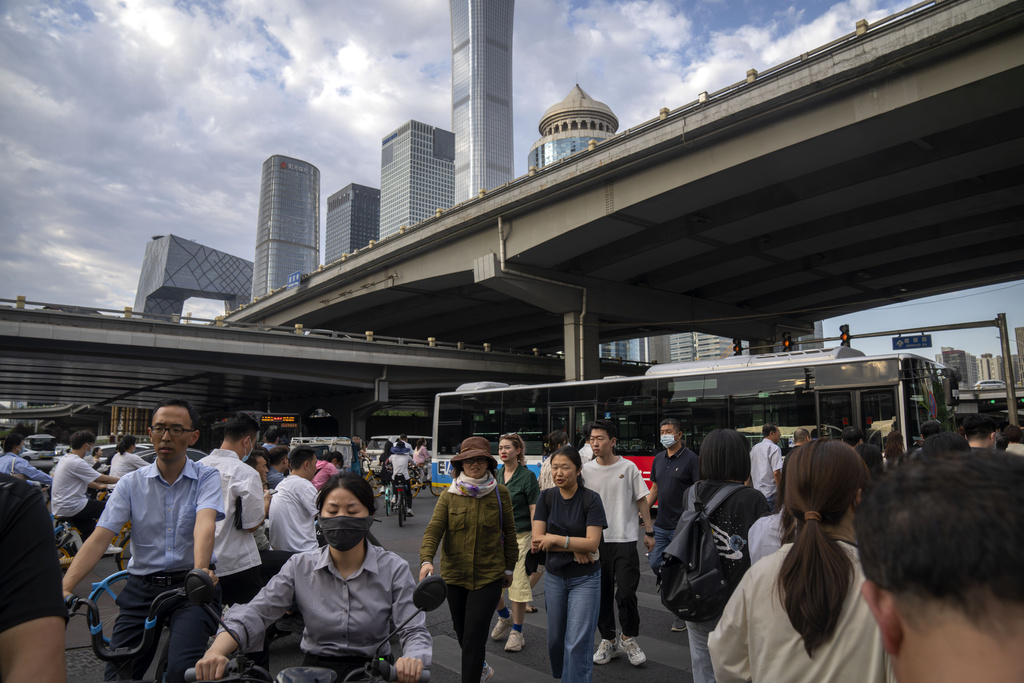China’s Economy Misses Growth Forecasts
The world’s second-largest economy grew at a 6.3 percent annual pace in the April-June quarter, much slower than the 7 percent-plus growth analysts had forecast.

HONG KONG — Communist China’s economic growth missed forecasts in the second quarter of the year, adding to worries over surging youth unemployment and a weak property sector and raising the likelihood the government will double down on support for the faltering post-Covid recovery.
The world’s second-largest economy grew at a 6.3 percent annual pace in the April-June quarter, much slower than the 7 percent plus growth analysts had forecast, given the anemic pace of activity the year before.
Unemployment of youths aged 16 to 24 rose to a record 21.3 percent in June, up from 20.8 percent the month before.
Investment in property development, a vital driver of both industrial and consumer demand, sank 7.9 percent in the first half of the year compared to a year earlier in a troubling sign of persisting weakness in an industry that slowed even before the pandemic as the government moved to rein in excessive borrowing.
Officials have acknowledged that the economy is facing stiff headwinds but said they expected growth to still reach the ruling Communist Party’s official target for this year of about 5 percent.
The government will adjust policies to stabilize growth, the National Bureau of Statistics spokesman, Fu Linghui, said at a news conference Monday.
Quarterly growth, the usual measure for other major economies, was 0.8 percent, according to government data released Monday, in line with expectations but down sharply from 2.2 percent in January-June.

Analysts have been far less optimistic than the Chinese government about the outlook for the year, given weakening demand for Chinese exports in other major economies.
The numbers are a “worrying result,” said a Moody’s Analytics economist, Harry Cruise.
“China’s recovery is going from bad to worse,” he said. “After a sugar injection in the opening months of 2023, the pandemic hangover is plaguing China’s recovery.”
Government spending is likely to help key industries like real estate and construction but won’t be a “silver bullet,” Mr. Cruise said in a commentary.
The 6.3 percent growth in China’s gross domestic product from April to June outpaced a 4.5 percent expansion in the previous quarter.
The still robust growth is largely due to the economy growing just 0.4 percent a year earlier in April-June of 2022, amid strict lockdowns at Shanghai and other cities during COVID-19 outbreaks.
Apart from more government spending, regulators may cut interest rates and take other measures to free up credit, wrote a global market strategist at J.P. Morgan Asset Management, Marcella Chow, in a report.
“The weak economic readings suggest an urgency in escalating policy support so as to stabilize expectations,” Ms. Chow said.
Earlier this year, growth was boosted as people flocked to shopping malls and restaurants after nearly three years of “zero-COVID” restrictions were removed in late 2022.
The government’s growth target of “around 5 percent” was seen as a conservative goal. It can only be met if the economy maintains close to its current level of growth.
Data released earlier showed exports declined 12.4 percent in June from a year earlier as global demand faltered after central banks in America and Europe raised interest rates to curb inflation.
Retail sales, an indicator of consumer demand, in June rose 3.1 percent from the same period in 2022. That’s seen as a strong point but not strong enough, analysts said.
Industrial output, which measures activity in the manufacturing, mining, and utilities sectors, beat analysts’ expectations, rising by 4.4 percent in June compared to the same month a year earlier.
China’s policymakers are not having to fight inflation, but may end up having to contend with its opposite, deflation or falling prices due to weak demand. In recent months, the authorities have tried to spur lending and spending with mixed success.
Fixed-asset investment — spending on factory equipment, construction, and other infrastructure projects to drive growth — rose by a still tepid 3.8 percent for the first half of 2023 compared to the same period of 2022.
